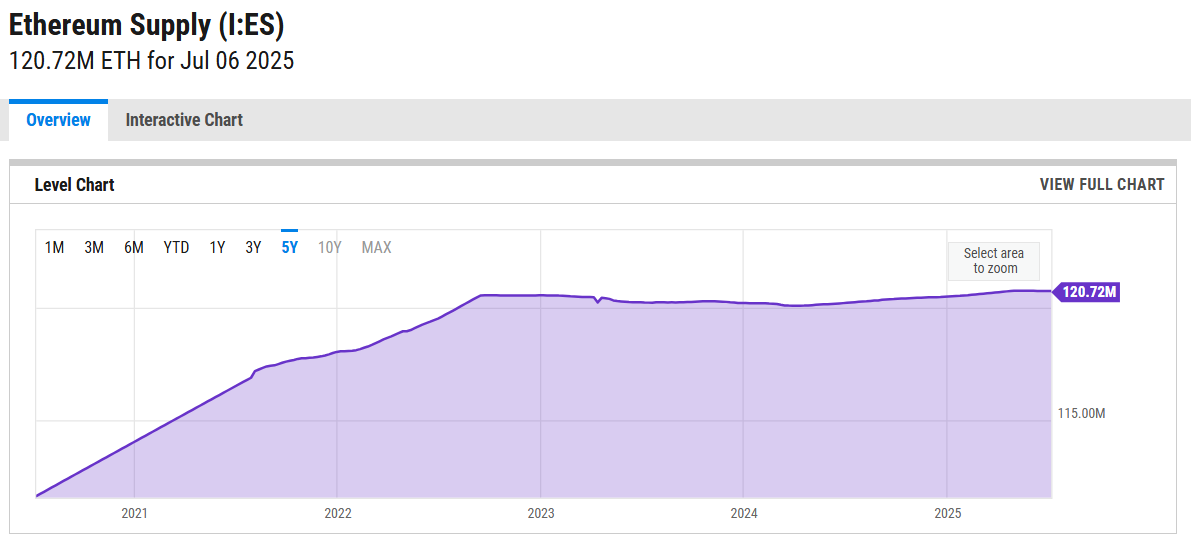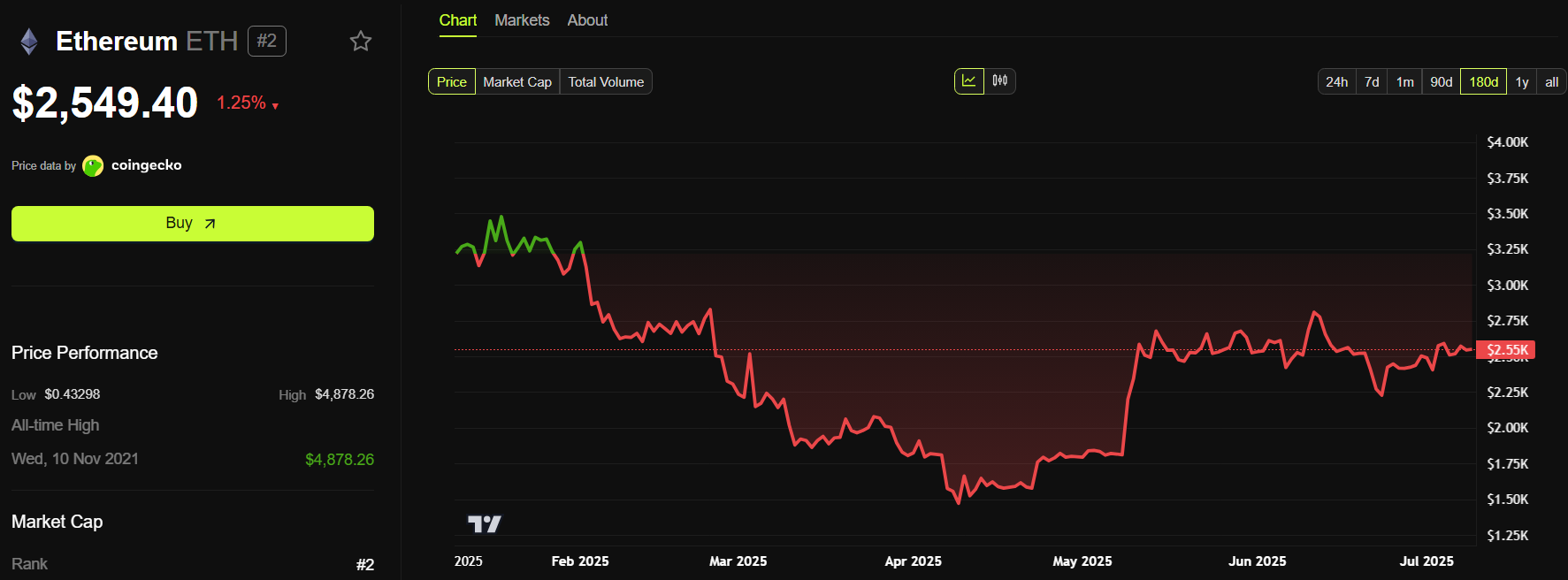Public companies are writing a new chapter in Ethereum's history by recently accumulating Ethereum. Experts and market analysts believe this accumulation trend will become even stronger in the future.
Recently, a company sold Bitcoin and purchased Ethereum, indicating a significant change in long-term expectations for this asset compared to the overall market.
Will Institutions Buy Both New Issuance and ETH?
After Ethereum's Merge upgrade in September 2022, the network dramatically reduced ETH issuance. According to Ycharts data, issuers have only circulated about 300,000 new ETH since this upgrade.

Moreover, Ethereum permanently burns a portion of transaction fees, and validators must lock up a large amount of ETH to protect the network. If companies and institutions strengthen ETH accumulation in 2025, the imbalance between supply and demand could be further intensified.
Ethereum developer Vinje compared ETH to an oil field producing just one barrel per day, while Wall Street consumes six barrels. His point is that new ETH issuance is extremely low compared to the amount institutions continue to buy and hold.
"Sharplink Gaming and Bit Digital consumed 82% of all net new ETH issued after the Merge in just one month (298,770). Additionally, spot ETFs hold 4.11 million ETH, which is 11 times the net issuance. Essentially, it's like an oil field producing one barrel a day being consumed by Wall Street with six barrels." – Vinje, Ethereum Developer
BeInCrypto reported that Bit Digital sold all its Bitcoin holdings of 280 BTC for about $28 million and, combined with $172 million raised through public offering, purchased 100,603 ETH worth approximately $254.8 million. Previously, Sharplink Gaming raised $425 million to buy more Ethereum.
These moves prompted the famous cryptocurrency analyst Pentoshi to predict that institutions will soon absorb all new ETH issuance.
"Within less than a month, public companies will purchase enough ETH to offset all ETH created after the Merge." – Pentoshi, Cryptocurrency Analyst
Both Pentoshi and Vinje argue that ETH accumulation is still in its early stages. They believe ETH could transform into a mainstream deflationary asset.
However, some critics challenge this view. They argue that companies may be holding ETH primarily to attract "exit liquidity", allowing large investors to sell at higher prices.
These critics claim that narratives that once drove ETH prices, such as ICOs, DeFi, and Non-Fungible Tokens, have lost their momentum. They say stablecoins now drive ETH demand. However, Ethereum may lose its leading position as more blockchains compete to host stablecoins.
"Today, the only narrative ETH has is stablecoins. But does a $300 billion decentralized blockchain really need to trade IOUs? No. Many stablecoin chains will be launched to compete with ETH. Companies holding ETH are simply trying to attract exit liquidity." – John Galt, Investor

At the time of writing, ETH is trading at around $2,550. ETH's price is still half of its all-time high from 2021.






